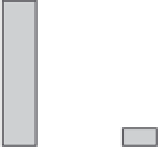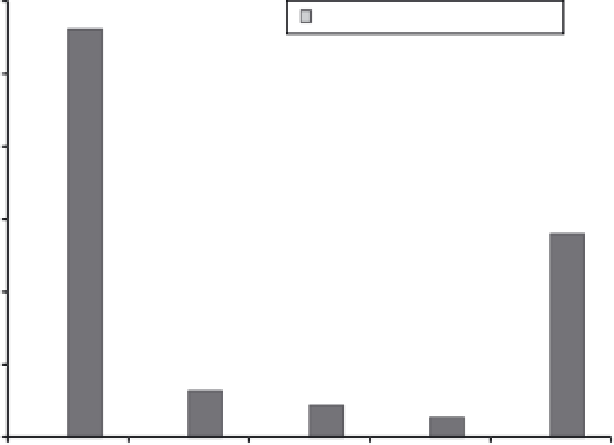Agriculture Reference
In-Depth Information
Table 28.3.
Composition of watermelons of different flesh colors, per 100 g fresh weight.
1
Flesh Color
Rind Color
Nutrient
Red
Orange
Yellow
Red
Orange
Yellow
Moisture
g
89.64
89.74
89.22
94.34
95.20
95.10
Ash
g
0.38
0.42
0.38
0.84
0.47
0.48
Protein
g
0.95
0.92
1.00
0.56
0.40
0.48
Total dietary fiber
g
0.42
0.35
0.33
1.78
1.18
1.59
Magnesium
mg
15.63
16.50
15.10
9.48
7.46
4.61
Potassium
mg
117.21
168.33
148.40
485.17
198.83
227.43
Total sugars
g
8.63
8.22
8.00
3.45
4.39
4.08
Glucose
% of
26.2
29.0
28.9
32.7
39.3
33.4
Fructose
total
38.1
42.8
42.4
35.8
28.2
28.6
Sucrose
sugars
35.8
28.2
28.6
2.7
1.8
2.9
1
Red-fleshed watermelons: Tri-X-313, Summer Flavor 800; orange-fleshed: Orange Flesh Tendersweet, Orange
Sunshine; yellow-fleshed: Summer Gold, Solid Gold.
Source: Perkins-Veazie et al. (2002).
more efficiently by the body if processed into juice, sauce,
paste and ketchup. Because lycopene is bound to cell
walls of plant material, processing disrupts cell walls and
releases lycopene, allowing for improved uptake (Shi and
Le Maguer, 2000). Edwards et al. (2003) reported that the
uptake of lycopene from non-heat-processed watermelon
juice was similar to that of heat-processed tomato juice.
Watermelon is rich in L-citrulline, an effective precursor
of L-arginine (Wu et al., 2007). Watermelon consumption
has been shown to plasma arginine concentrations in adults
(Collins et al., 2007). Therapeutic use of citrulline in car-
diovascular disease was reported by Romero et al. (2006).
A study was conducted to determine whether dietary sup-
plementation with watermelon pomace juice (WPJ) could
ameliorate the metabolic syndrome in the Zucker diabetic
fatty (ZDF) rat, an animal model of non-insulin-dependent
diabetes mellitus (Wu et al., 2007). The results of this study
provided one of the first evidence of a beneficial effect of
120
112.0
mg/100 g
mg/serving
100
80
56.0
60
40.0
40
20.0
20
12.6
8.4
5.6
4.5
2.0
0.3
0
Total phenolics
Lycopene
β
-carotene
Phytosterols
Citrulline
Figure 28.3.
Content of nonnutritive bioactive components in watermelon (total phenolic content as gallic
acid equiv.) (source: Perkins-Veazie et al., 2001; Rimando and Perkins-Veazie, 2003; Tarazona-Diaz et al., 2011;
USDA, 2010).








Search WWH ::

Custom Search